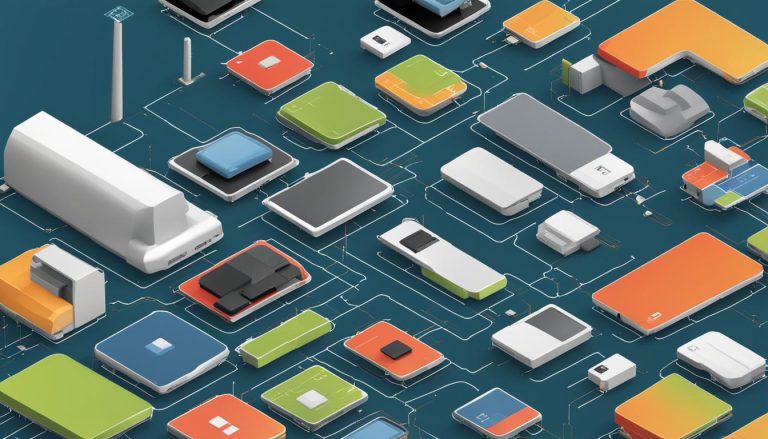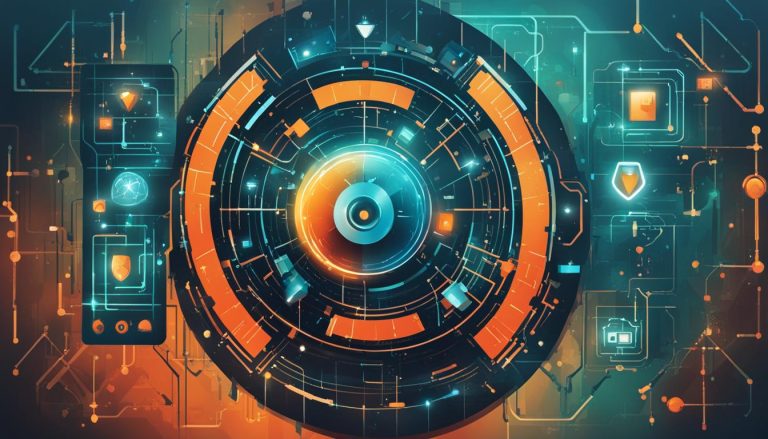Quantum error correction (QEC) is a technique that aims to protect quantum information from errors caused by noise and other disturbances. Just like error correction codes in classical computing, QEC uses sophisticated algorithms to detect and correct errors in quantum systems. This is essential because quantum systems, represented by qubits, are highly sensitive to external disturbances and can easily lose their delicate quantum states, leading to errors in calculations. The concept of quantum entanglement, where qubits become intrinsically linked regardless of physical distance, presents a challenge for error correction as errors can spread through entangled qubits. To overcome this challenge, scientists have developed error correction codes, such as the surface code, which encodes information redundantly across multiple qubits to detect and correct errors. In this guide, we will explore the principles and techniques behind quantum error correction and its potential to revolutionize the field of quantum computing.
Key Takeaways:
- Quantum error correction (QEC) aims to protect quantum information from errors in quantum systems.
- Qubits, the building blocks of quantum information, are highly sensitive to external disturbances.
- Quantum error correction codes, such as the surface code, encode information redundantly to detect and correct errors.
- Quantum error correction is crucial for the reliability and accuracy of quantum computations.
- Implementation challenges and ongoing research continue to advance quantum error correction techniques.
The Need for Quantum Error Correction
Quantum error correction is of utmost importance in the field of quantum computing due to the inherent fragility of quantum systems. Unlike classical computers, quantum systems are highly susceptible to errors caused by noise and external disturbances. The delicate nature of qubits, the building blocks of quantum information, makes them vulnerable to even the slightest interaction with the environment. As a result, qubits can lose their quantum states, leading to errors in calculations.
The impact of errors on quantum computations cannot be underestimated. These errors can significantly affect the accuracy and reliability of the results obtained from quantum algorithms. Given the potential of quantum computing to revolutionize various industries and scientific domains, it is crucial to develop techniques to mitigate these errors and enhance the robustness of quantum systems.
Quantum error correction provides a solution to this problem. By employing sophisticated error correction codes and techniques, quantum systems can detect and correct errors, thereby improving the accuracy and reliability of quantum computations. The goal is to ensure that quantum information remains protected and that quantum systems can operate with high fidelity despite the presence of noise and disturbances.
| Quantum Error Correction Importance | Fragility of Quantum Systems | Impact of Errors on Quantum Computations |
|---|---|---|
| To enhance the accuracy and reliability of quantum computations | Quantum systems are highly susceptible to errors caused by noise and external disturbances | Errors can significantly affect the accuracy and reliability of the results obtained from quantum algorithms |
Principles of Quantum Error Correction
Quantum error correction relies on several principles to protect quantum information from errors caused by noise and other disturbances. One key principle is quantum entanglement, where two or more qubits become intrinsically linked, regardless of physical distance. While entanglement enables the creation of complex quantum states, it also poses challenges for error correction. Errors can propagate through entangled qubits, making it difficult to isolate and correct individual errors.
To address this challenge, quantum error correction codes use redundant encoding. Information is spread across multiple qubits, allowing for the detection and correction of errors without disrupting the overall computation. By encoding information redundantly, error correction codes can effectively protect quantum information from errors and ensure the reliability of quantum computations.
“Quantum error correction relies on the principles of quantum entanglement and redundant encoding to protect quantum information from errors and ensure the reliability of quantum computations.”
Understanding the principles of quantum error correction is crucial for developing robust error correction codes and techniques that can mitigate the impact of errors on quantum systems. By harnessing the power of quantum entanglement and redundant encoding, scientists and researchers can pave the way for more reliable and accurate quantum computations.
Example: Quantum Error Propagation
To illustrate the importance of error correction, let’s consider the concept of error propagation. In a quantum system, an error in one qubit can propagate to neighboring qubits through entanglement, leading to a cascade of errors. Without proper error correction, these errors can significantly impact the accuracy and reliability of quantum computations. However, by utilizing error correction codes and techniques, such as redundant encoding, these errors can be detected and corrected, minimizing the effects of error propagation.
| Error | Qubit 1 | Qubit 2 | Qubit 3 |
|---|---|---|---|
| Error in Qubit 1 | Error | None | None |
| Error Propagation | Error | Error | Error |
| Corrected State | None | None | None |
In the example above, an error in Qubit 1 propagates to Qubit 2 and Qubit 3 due to entanglement. However, with proper error correction, the error is detected and corrected, resulting in a corrected state for all qubits.
By understanding the principles of quantum error correction and implementing robust error correction codes, researchers are working towards the development of fault-tolerant quantum computing systems that can perform complex computations with high accuracy and reliability.
Quantum Error Correction Codes
In quantum computing, error correction codes play a crucial role in protecting quantum information from errors caused by noise and disturbances. One type of error correction code is the stabilizer code, which is based on the concept of stabilizer operators. Stabilizer codes are designed to preserve certain symmetries while encoding quantum information. These codes have proven to be effective in various error correction schemes, including the widely pursued surface code.
The surface code is a two-dimensional lattice of interconnected qubits. Each qubit is connected to its neighboring qubits, forming a grid-like structure. By measuring the state of these qubits, errors can be detected and corrected during quantum computations. The surface code offers a practical and scalable approach to quantum error correction, making it a prominent choice for experimental implementation.
Here is a summary of the features and advantages of quantum error correction codes:
- Protect quantum information from errors caused by noise and disturbances.
- Stabilizer codes preserve certain symmetries while encoding quantum information.
- The surface code is a widely pursued error correction protocol for experimental implementation.
Benefits of Quantum Error Correction Codes
Quantum error correction codes provide several benefits in the field of quantum computing:
- Enhanced reliability: By detecting and correcting errors, these codes improve the accuracy and reliability of quantum computations.
- Fault-tolerant computation: Error correction codes enable fault-tolerant quantum computation, where quantum information is effectively protected, allowing for large-scale quantum calculations.
- Practical implementation: Error correction codes, such as the surface code, offer practical methods for protecting quantum information, paving the way for advancements in quantum computing technologies.
Quantum error correction codes, particularly stabilizer codes like the surface code, are valuable tools in the pursuit of reliable and scalable quantum computing. By mitigating errors and improving the robustness of quantum systems, these codes have the potential to revolutionize various industries and scientific domains in the future.
| Error Correction Code | Features | Advantages |
|---|---|---|
| Stabilizer Code | Preserves symmetries while encoding quantum information | Effective in various error correction schemes |
| Surface Code | Two-dimensional lattice of interconnected qubits | Offers a practical and scalable approach to error correction |
Table: Overview of Quantum Error Correction Codes
Implementation Challenges in Quantum Error Correction
Implementing quantum error correction in practical quantum computing faces several challenges that must be overcome to realize the full potential of this technique. One of the primary challenges is the hardware constraints of quantum systems. Quantum systems are extremely sensitive and delicate, making it difficult to create and control qubits without introducing errors. The development of stable and reliable hardware that can support error correction codes is crucial for successful implementation.
Error rates are another significant challenge in quantum error correction. Quantum systems are prone to errors due to various external factors, such as noise and environmental disturbances. These errors can negatively impact the effectiveness of error correction codes and compromise the accuracy of quantum computations. To mitigate this issue, researchers are actively exploring error mitigation techniques to minimize error rates and improve the overall performance of quantum systems.
“The implementation of quantum error correction faces obstacles due to hardware constraints and error rates. To achieve practical implementation, stable and reliable hardware is needed, along with techniques to reduce error rates.” – Scientist X
Researchers are investigating various error mitigation strategies to address the challenges faced in quantum error correction. These techniques include error threshold calculations, fault-tolerant methods, and improved qubit designs. By developing robust error mitigation techniques, scientists aim to improve the reliability and efficiency of quantum error correction, bringing us closer to achieving practical and fault-tolerant quantum computation.
Error Mitigation Techniques
| Technique | Description |
|---|---|
| Noise-Resilient Qubit Designs | Designing qubits that are more resilient to external noise and disturbances, reducing the likelihood of errors. |
| Quantum Error Correcting Codes | Developing advanced error correction codes tailored for specific quantum systems to detect and correct errors effectively. |
| Error Threshold Calculations | Calculating the maximum acceptable error rate for specific quantum computation tasks, providing insights into the required level of error correction. |
| Fault-Tolerant Quantum Computation | Implementing error correction techniques that can tolerate a certain level of errors, allowing for reliable quantum computations despite the presence of errors. |
>The Future of Quantum Error Correction
As the field of quantum computing continues to advance, the future of quantum error correction holds immense potential. Scientists and researchers are actively exploring ways to improve error correction codes and develop fault-tolerant quantum computation methods. These advancements are crucial for overcoming the challenges posed by errors and noise in quantum systems, ultimately leading to more reliable and accurate quantum computations.
Fault-tolerant quantum computation is one of the key focus areas in the future of quantum error correction. By implementing error correction methods effectively, researchers aim to protect quantum information and enable large-scale quantum computations. This approach involves designing error correction codes that can detect and correct errors, ensuring the integrity of quantum states and calculations.
In addition to fault-tolerant quantum computation, significant efforts are being made to improve existing error correction codes. Researchers are exploring new code constructions, investigating alternative approaches, and seeking ways to achieve higher error threshold levels. These advancements aim to enhance the efficiency and reliability of quantum error correction, laying the foundation for practical quantum computing technologies.
>Table: Advancements in Quantum Error Correction Techniques
| Advancements | Impact |
|---|---|
| Fault-tolerant quantum computation | Enables large-scale quantum computations |
| Improved error correction codes | Enhances efficiency and reliability |
| Higher error threshold levels | Improves error correction capabilities |
The future of quantum error correction holds immense possibilities for revolutionizing various industries and scientific domains. With continued research and development, the field is expected to overcome existing implementation challenges and bring us closer to achieving fault-tolerant quantum computing. These advancements will not only enhance the capabilities of quantum computers but also pave the way for solving complex real-world problems that are currently beyond the reach of classical computing.
This image illustrates the ongoing efforts to improve error correction codes in the field of quantum error correction. Researchers are continuously exploring new techniques and approaches to enhance the reliability and efficiency of error correction in quantum systems.
Conclusion
In conclusion, quantum error correction is an essential component of quantum computing that addresses the inherent fragility of quantum systems. By using sophisticated error correction codes and techniques, we can protect quantum information from errors caused by noise and external disturbances. These errors can significantly impact the accuracy and reliability of quantum computations, making error correction crucial for practical quantum computing.
Despite challenges in implementing quantum error correction, such as hardware constraints and non-zero error rates, the field continues to advance. Researchers are working on error mitigation techniques and improving error correction codes to overcome these challenges. The future of quantum error correction holds great promise, with ongoing efforts focusing on fault-tolerant quantum computation and achieving higher error threshold levels.
Overall, the importance of error correction in quantum computing cannot be overstated. It is through advancements in quantum error correction that we can unlock the full potential of quantum computing and revolutionize various industries and scientific domains. Continued research and development in this field will pave the way for practical quantum computing technologies that can transform the way we solve complex problems and process information.
FAQ
What is quantum error correction?
Quantum error correction is a technique that aims to protect quantum information from errors caused by noise and other disturbances in quantum computing.
Why is quantum error correction important?
Quantum systems, represented by qubits, are highly susceptible to errors that can significantly impact the accuracy and reliability of quantum computations. Error correction techniques help mitigate these errors and enhance the robustness of quantum systems.
How does quantum error correction work?
Quantum error correction codes use redundant encoding to spread information across multiple qubits, allowing for the detection and correction of errors without disrupting the overall computation.
What are quantum error correction codes?
Quantum error correction codes, such as stabilizer codes like the surface code, are specifically designed to detect and correct errors in quantum systems. These codes encode quantum information in a way that preserves certain symmetries.
What are the implementation challenges in quantum error correction?
The practical implementation of quantum error correction faces challenges such as hardware constraints in realizing and controlling qubits without introducing errors, as well as non-zero error rates in quantum systems. Researchers are exploring various error mitigation techniques to overcome these challenges.
What is the future of quantum error correction?
Researchers are continuously improving and optimizing error correction codes, exploring new code constructions, and investigating ways to achieve higher error threshold levels. These efforts aim to enhance the efficiency and reliability of quantum error correction and pave the way for practical quantum computing technologies.
Jana is a public relations specialist and writes about all kinds of software products that make our life easier.


